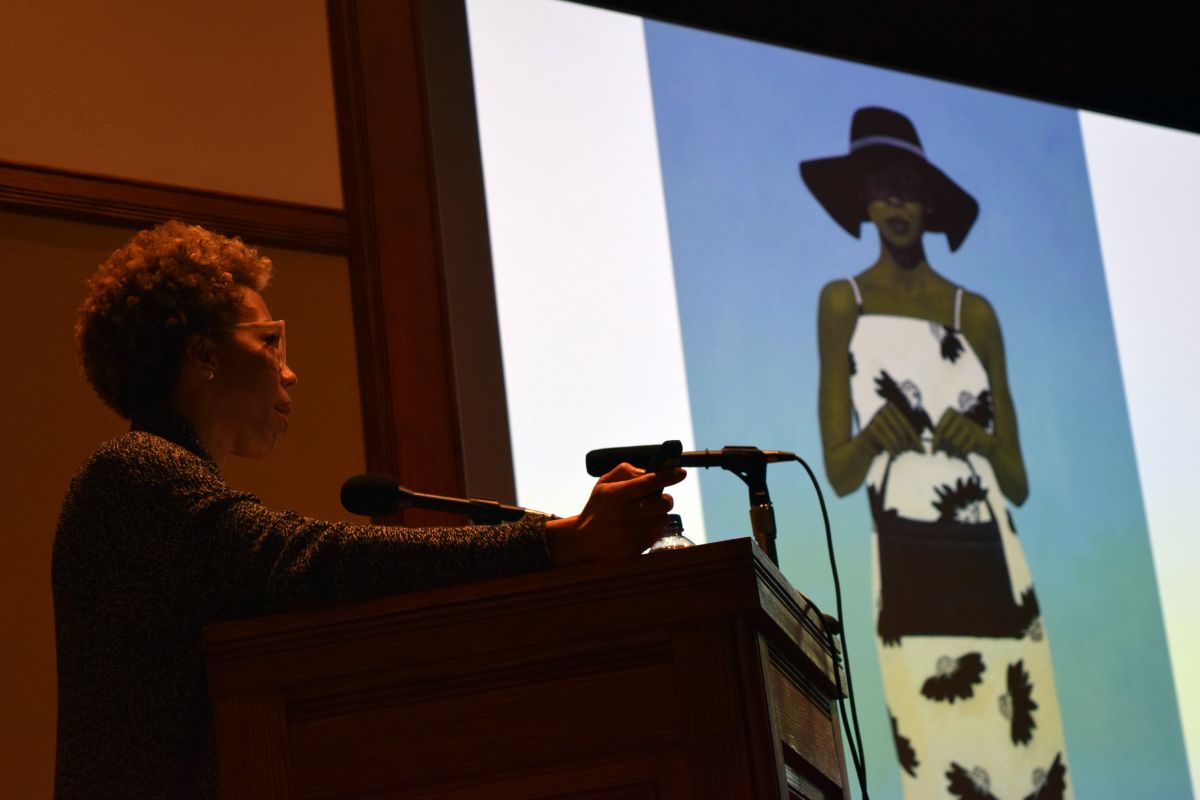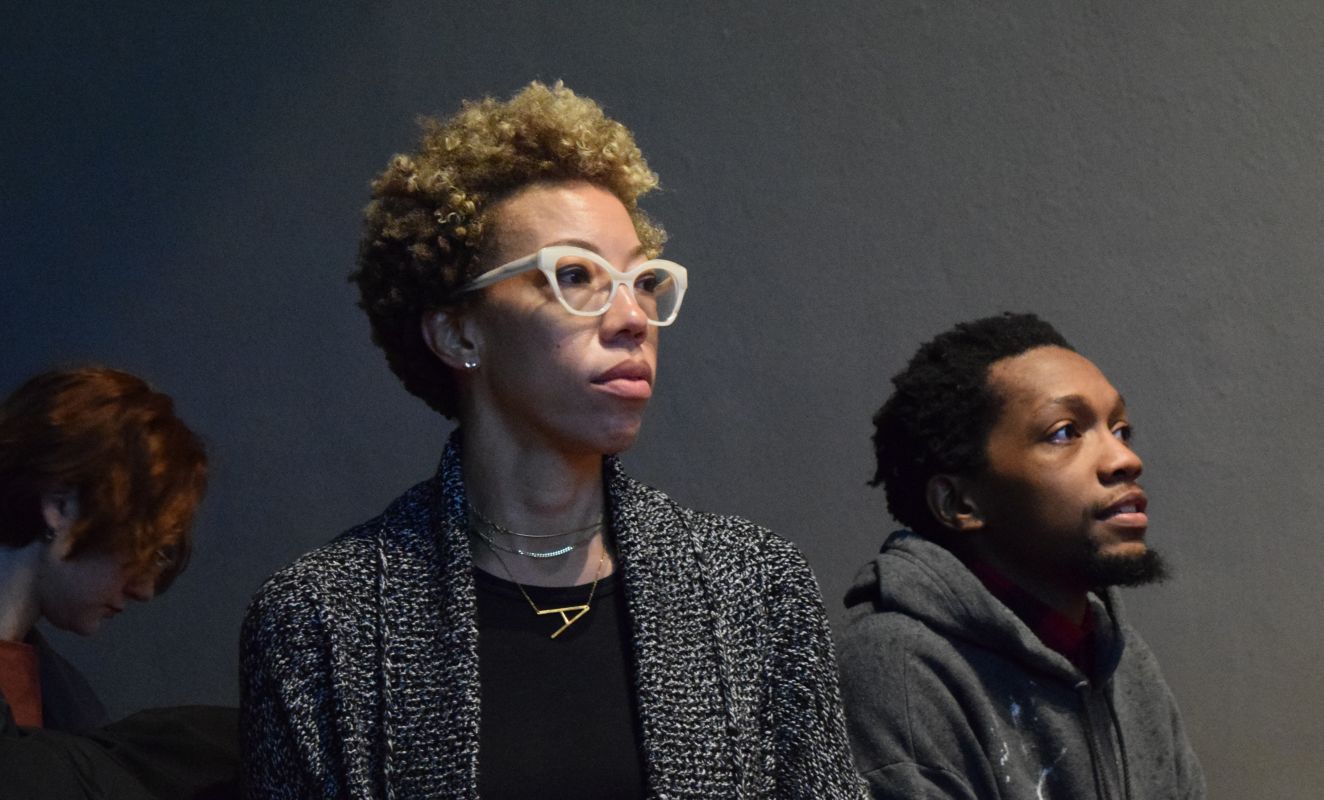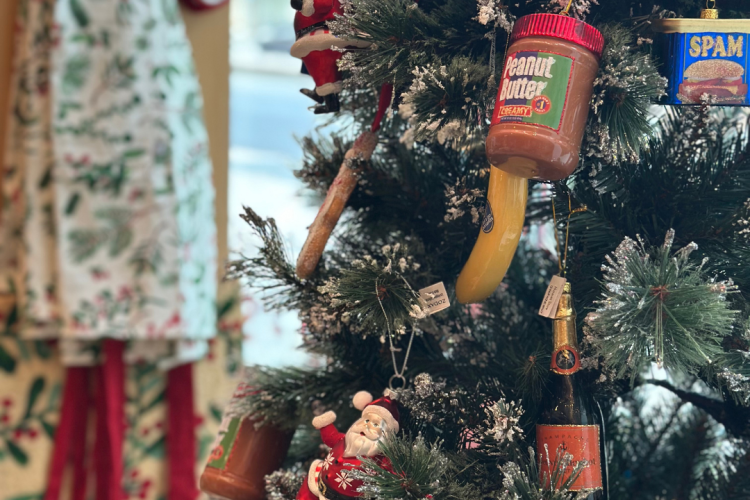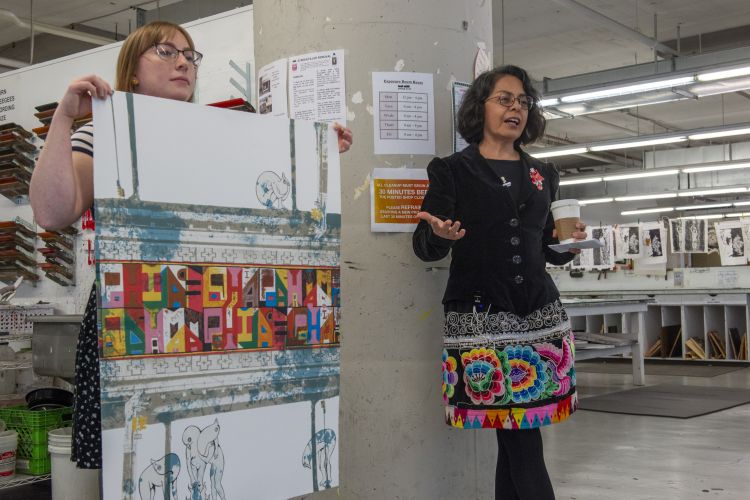STORIES FROM PAFA
Artist Amy Sherald, portraitist of Michelle Obama, visits PAFA
Students from PAFA welcomed artist Amy Sherald to PAFA on Friday, March 2nd 2018 as part of the Visiting Artists Program.
Amy Sherald is a figurative painter, whose portraits offer a critical view of African American cultural history and representations of their bodies. She is known for using a grayscale to paint skin tones as a way of challenging the concept of color-as-race. Sherald was recently commissioned to paint former First Lady Michelle Obama’s official portrait for the National Portrait Gallery and talked about the pressure she had to endure and block when working on such an important national piece.
The Visiting Artists Program is a student-run venture that brings an outstanding roster of local, national and international artists to PAFA each semester. PAFA students not only attend lectures with the visiting artist but are also given the opportunity to have an in-studio critique with various artists throughout the semester.
The free program is open to the public and exposes participants to a range of artistic approaches, and fosters discussion about contemporary art and ideas.
Below is an excerpt of Sherald’s lecture; it’s been edited for flow and clarity.
The impact of PAFA alum Bo Bartlett
On our first field trip to a museum in elementary school, this is the image that I saw that kind of changed my life. This image is called Object Permanence, it’s painted by painter Bo Bartlett (PAFA Certificate ’80) and it was the first time I had ever seen a real painting. Because of this painting I realized I could do what I wanted to do. I knew I wanted to be an artist but this vision he painted made it possible for me to do it in my mind and that’s where everything is.
Following her passion in college
I was pre-med for a while in college. Going into my third year and I decided to change my major without telling my parents. My dad wanted me to take over his dental practice but unfortunately I couldn’t pass biology. Despite the fact my dad had a masters degree and would tutor me, I was a poor test taker. So when I started to make work in college, I was able to make my own program.
I consider myself self-taught because by the time I changed my major I didn’t have time to take any classes so my professor said, “You’re going to do directed studies.” By the time I got to grad school I was still really struggling with things I should have already known. It’s just about continuing to paint; I got better the more I painted.
Reflecting on one of her own favorite paintings
All Things Bright And Beautiful is one of my favorite paintings and she’s one of my favorite models, her name is Morgan. I met her in a park. I used to live by a park and I had a big dog, and I was out in the park and she walked up to me because she wanted to play with my dog. She had this dress on and it was the most adorable thing so I started talking to her and asking her questions. Eventually I made my way over to her mother and had the awkward conversation of: “I love your daughter. I love the way she looks. Can I paint her?”
When Morgan saw this painting after I finished it she was like, “I think you did a pretty good job, it’s pretty accurate.” Thanks, Morgan.
Naming her work
Usually I send images to my sister and I say, “You have two months to figure out a name for this,” and we go back and forth. When I have to name my paintings it usually takes four or five months because I feel too connected to it in a way. I developed this partnership with her and I really like the way it works. But when she can’t do it then I have books of poetry that I usually look at. After rummaging through a number of books there will be three or four words in a row or something like that and it sits with me, and I write those down.
Blocking out external expectations when painting Michelle Obama
When I was approaching her painting I decided to treat it as any other painting. In a way I had to in order to do it, there was a level of excitement there that leaves you unfocused.
When you’re painting an image of a person like herself, there’s over a billion people invested in her on these emotional levels so I can’t really think about that at all. It has to be about the composition, the pose, it has to be about the dress and the background, and it was really about those specific things.
I didn’t really think about what people were going to think about it. For me, it was impossible to work that way. What’s happening now afterward, I have no control of perception and what people think. It just felt right, she felt like she was just another model except for the fact that she’s a major historical figure.
Achieving dreams and goals
Make sure you’re on your path and you’re paying attention to what you’re doing and not comparing yourself to what other people are doing.
I used to run back and forth to New York thinking I was going to show up at a gallery and meet somebody and my life was going to get magically changed, and then I realized that was a waste of time. You need to be in your studio, you need to be working; you need to be developing your ideas.
I think it’s about your intent and ability to manifest your future so that’s something I did a lot too. I sat in my studio and there’s this singer Goapele and she has this song called “Closer To My Dreams” and I would play it and sit there and meditate and see myself in some random gallery space in New York City because that was my end dream at the time, and Michelle Obama was not even anywhere in there. I would do it until I started crying, until I felt it. And then I would start working again. It’s all energy. You have to figure out your path and get there.
We're so excited you're planning to visit PAFA!
Make time for art — visit us Thursday to Sunday.
Before reserving your tickets, please review helpful information about museum hours, accessibility, building access, and special admission programs.
If you have any questions, feel free to reach out to us at visitorservices@pafa.org — we’d love to help!





